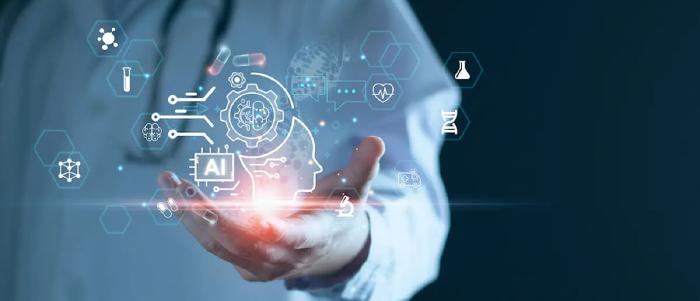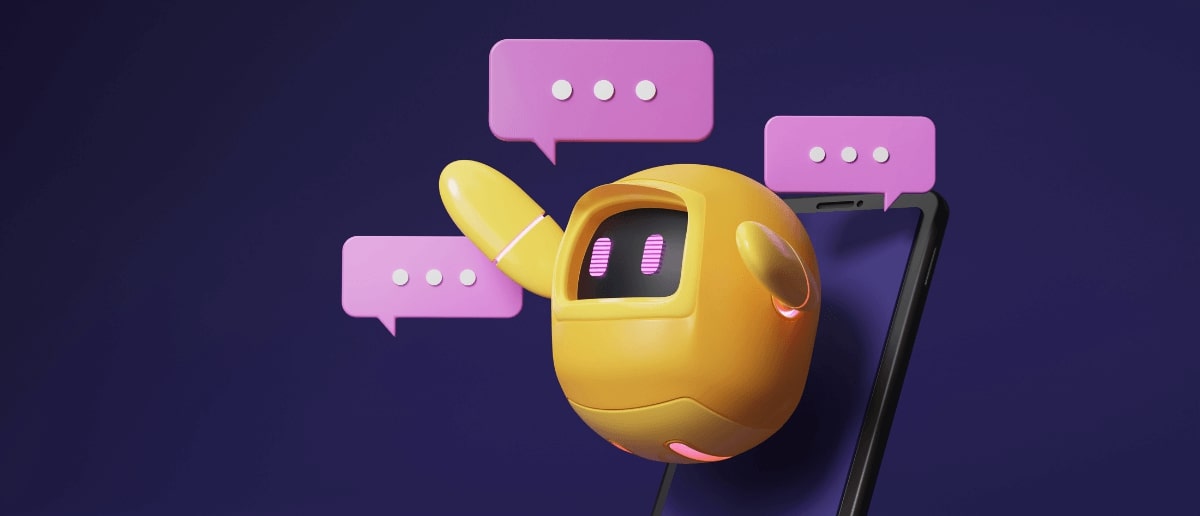
December 9 2023
8 min read

Dec
Have you ever wished scheduling a doctor’s appointment could be as easy as sending a quick text? Well, that’s exactly what doctor appointment chatbots are here to do. These clever little helpers use AI to make booking your next visit hassle-free, any time of the day.
Let’s explore what doctor appointment chatbots are, how they work, their benefits, and much more.
A doctor appointment chatbot is a blend of technology and convenience in the healthcare sector. It’s an intelligent software program designed to facilitate the process of scheduling appointments with healthcare providers. These chatbots use artificial intelligence (AI) to interact with patients in a simple, conversational manner, much like messaging a knowledgeable assistant.
The core function of these chatbots is to understand and respond to patients’ inquiries about doctor appointments. They can handle various tasks such as checking the availability of doctors, booking appointments, and even sending reminders for upcoming visits. This is all done through an intuitive chat interface, making it feel like a natural conversation.
The beauty of a doctor appointment chatbot lies in its ability to streamline what used to be a time-consuming process. Gone are the days of waiting on hold to book an appointment or navigating through multiple web pages. With these chatbots, patients can easily schedule, reschedule, or inquire about appointments at any time, providing much-needed flexibility and efficiency in managing healthcare.
Do you know?
The global Healthcare Chatbots market was valued at USD 195.85 million in 2022 and is expected to reach USD 1,168 million by 2032 according to market.us.
The integration of doctor appointment chatbots into healthcare systems offers a multitude of benefits, both for patients and healthcare providers. These benefits not only enhance the efficiency of scheduling appointments but also contribute to a more streamlined healthcare experience overall.
Improved Accessibility and Convenience: Chatbots are accessible 24/7, allowing patients to schedule appointments at any time that suits them, without being restricted by office hours. This level of accessibility is particularly beneficial for those with busy schedules or in need of urgent care.
Reduced Waiting Times and Increased Efficiency: By automating the appointment scheduling process, chatbots can significantly reduce the time patients spend booking an appointment. This automation also helps in managing the healthcare provider’s calendar more efficiently, leading to better time management and reduced patient waiting times.
Enhanced Patient Engagement: Chatbots can provide personalized interactions, responding to patients’ specific queries and needs. This personalized communication can improve patient engagement and satisfaction, as patients feel more valued and understood.
Decreased Administrative Burden: For healthcare providers, chatbots can take over the repetitive task of scheduling appointments, freeing up staff to focus on more critical tasks. This can lead to a more productive use of resources and a decrease in administrative overhead.
Reminder and Follow-Up Features: Many chatbots come equipped with features to remind patients of their upcoming appointments or follow up on missed appointments. This can help reduce no-show rates and ensure patients receive the care they need in a timely manner.
Data Collection and Analysis: Chatbots can gather valuable data on patient preferences and behavior patterns. This data can be analyzed to improve healthcare services, tailor patient communications, and make informed decisions about healthcare practices.
Understanding the workings of doctor appointment chatbots can help patients and healthcare providers appreciate the sophistication and utility of this technology. These chatbots function on a blend of artificial intelligence, machine learning, and natural language processing, providing a seamless and intuitive user experience. Here’s a breakdown of how they typically operate:
User Interaction Initiation: The process begins when a patient initiates a conversation with the chatbot. This can be through a healthcare provider’s website, a mobile app, or even a messaging platform. The patient typically starts by expressing their need, such as scheduling an appointment.
Information Gathering and Response: Using natural language processing (NLP), the chatbot interprets the patient’s request and responds appropriately. It may ask for further details such as the preferred date and time for the appointment, the specific healthcare service required, or the patient’s symptoms.
Appointment Scheduling: Once the chatbot gathers all necessary information, it interfaces with the healthcare provider’s appointment system. Using the data provided by the patient, it identifies available appointment slots and offers them to the patient. The patient can then select the most convenient option.
Confirmation and Reminder: After the patient selects an appointment slot, the chatbot confirms the appointment. It may also offer to send reminders as the appointment date approaches, ensuring the patient remembers their scheduled visit.
Feedback and Follow-Up: Post-appointment, some chatbots may engage with patients to gather feedback about their experience or provide follow-up instructions as advised by the healthcare provider.
Continuous Learning: Many doctor appointment chatbots employ machine learning algorithms. Over time, they learn from interactions to improve their responses, making the appointment scheduling process even more efficient and user-friendly.
Selecting the appropriate doctor appointment chatbot for a healthcare practice or personal use involves several considerations. The right chatbot should align with the specific needs of the healthcare provider and the expectations of the patients. Here are key factors to consider when making this choice:
Integration Capabilities: The chatbot should seamlessly integrate with existing healthcare management systems, including electronic health records (EHR) and appointment scheduling software. This integration ensures a smooth flow of information and maintains consistency in patient data.
User-Friendly Interface: A chatbot must have an intuitive and easy-to-navigate interface. Patients of all ages and tech-savviness levels should find it straightforward to interact with the chatbot and complete their appointment scheduling without confusion.
Customization and Scalability: Consider whether the chatbot can be customized to meet the specific requirements of your healthcare practice. Additionally, it should be scalable to handle increasing patient interactions and evolving healthcare services.
Compliance with Regulations: In healthcare, compliance with regulations such as HIPAA (Health Insurance Portability and Accountability Act) in the United States is crucial. The chatbot must ensure data privacy and security, protecting patient information at all times.
Reliability and Support: The chatbot should demonstrate high reliability with minimal downtime. Also, consider the level of customer support provided by the chatbot vendor for troubleshooting and updates.
Feedback and Analytics: A good chatbot should offer analytics and reporting capabilities to track its performance and user engagement. This feedback can be invaluable in understanding patient needs and enhancing the chatbot’s functionality.
Cost-effectiveness: Evaluate the cost of implementing and maintaining the chatbot against the benefits it offers in terms of improved efficiency and patient satisfaction. A cost-effective solution will provide a good return on investment.
Trial and Reviews: If possible, opt for a trial period to test the chatbot’s functionality and effectiveness in real-world scenarios. Additionally, reviews and testimonials from other healthcare providers can provide insights into the chatbot’s performance and reliability.
You may find this useful: Easy-to-Understand Benefits of AI in Healthcare
While doctor appointment chatbots offer numerous advantages, their implementation can come with its own set of challenges. Understanding these obstacles and planning for them can ensure a smoother integration of this technology into healthcare systems.
Patient Privacy and Data Security: One of the primary concerns with any digital healthcare tool is the security and confidentiality of patient data.
Integration with Existing Systems: Chatbots need to work in harmony with existing healthcare management systems, which can vary widely in their complexity and technology.
User Adoption: Convincing patients and healthcare staff to adapt to a new system can be challenging, especially for those less comfortable with technology.
Accuracy and Reliability: The chatbot must accurately interpret and respond to patient queries to avoid scheduling errors or miscommunications.
Scalability Issues: As the healthcare provider grows, the chatbot must be able to scale up to handle increased interactions without compromising performance.
Maintaining a Personal Touch: Balancing automation with the need for personal interaction in healthcare is crucial.
Doctor appointment chatbots are changing the way we go to the doctor. They make it really easy to set up doctor visits. You can do it any time, and it’s super quick. For doctors and their teams, these chatbots mean less work with scheduling and more time to help patients. With these chatbots, we’re moving towards a future where managing doctor appointments is hassle-free, giving both patients and healthcare providers more time to focus on what really matters: health and well-being.

December 9 2023
8 min read

November 30 2023
8 min read

November 22 2023
8 min read

November 13 2023
8 min read